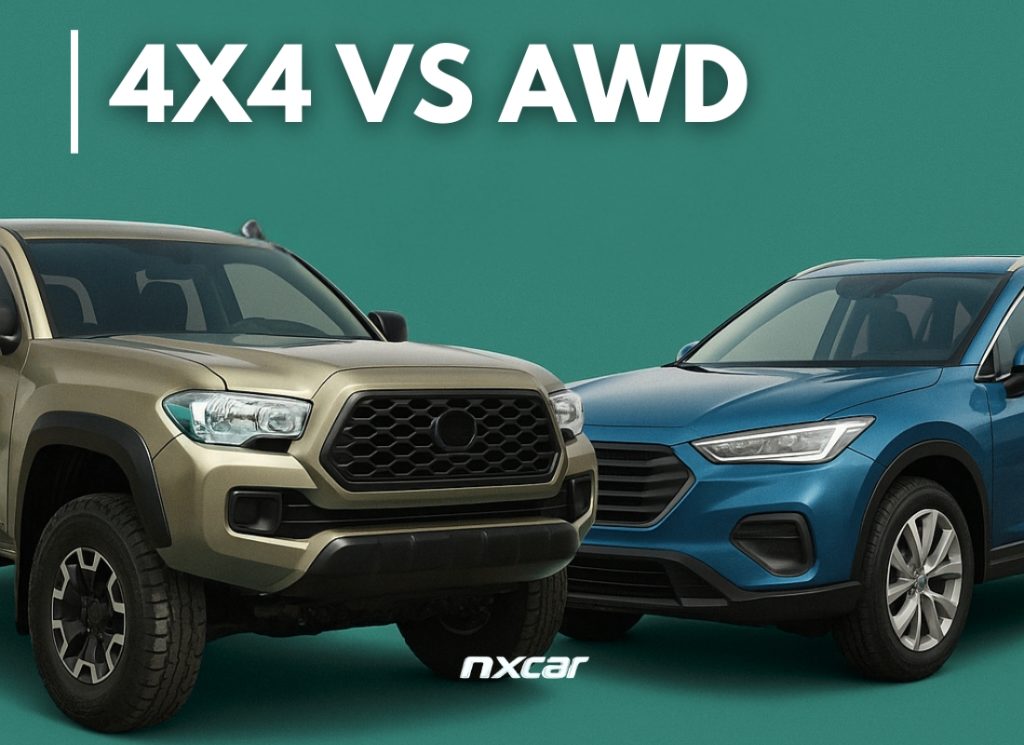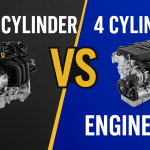Mud-slick mountain trails. Rain-polished city streets. Endless highways stretching toward the horizon. No matter where the road leads, the question of traction—and how it’s delivered—becomes the silent architect of every journey. That’s where the ongoing debate of 4×4 vs AWD explained takes center stage. These two driveline systems often get tossed into the same conversation, yet they’re worlds apart in engineering intent and driving experience. 4×4 vs AWD isn’t just a technical distinction—it’s about lifestyle, ambition, and the type of terrain you’re willing to conquer. For the adventurer who craves rugged durability and raw control, 4WD vs AWD reveals a narrative of mechanical grit versus adaptive intelligence. While one system thrives on command and resilience in hostile landscapes, the other whispers promises of seamless safety in everyday chaos. Beneath the hood, each setup tells a story of power distribution, efficiency, and design philosophy. The real intrigue lies in understanding not just how they differ, but why it matters when rubber meets the earth. This isn’t a tale of “better or worse,” but of choosing the drivetrain that aligns with your path—and perhaps, the one that dares you to carve a new one.
What Is All-Wheel Drive?
All-Wheel Drive (AWD) is a drivetrain system crafted for balance, adaptability, and assurance. At its core, AWD delivers power to all four wheels, but unlike traditional four-wheel drive, it does so with subtle precision. Instead of relying on driver input, the system continuously monitors road conditions, redistributing torque between front and rear axles as needed. The result is a seamless driving experience where traction feels natural, not forced.
The Essence of AWD
AWD thrives on intelligence. Sensors, clutches, and electronic control units collaborate in real time, ensuring stability whether the surface is slick with rain, dusted with snow, or winding through unpredictable terrain. Unlike heavy-duty off-road systems, AWD is designed to work quietly in the background, prioritizing safety and efficiency without demanding intervention. This makes it particularly valuable in everyday environments where conditions shift without warning.
AWD in Context
The conversation around 4×4 vs AWD explained often highlights these distinctions. 4×4 vs AWD boils down to driver preference: AWD offers subtle sophistication and consistent stability, while 4×4 emphasizes raw control and mechanical dominance in extreme terrains.
When evaluating 4WD vs AWD, the divergence becomes clearer. AWD caters to daily commuters and long-distance travelers who value predictability and comfort, while 4WD is reserved for adventurers who seek rugged endurance. Both systems have their place, but they serve different philosophies of mobility.
Why AWD Matters
AWD represents more than engineering—it’s peace of mind. It ensures that when the road becomes uncertain, your vehicle remains steady and responsive. For those who value convenience blended with confidence, AWD is the silent guardian, ready to adapt to every curve, climb, and unexpected challenge.
How Does AWD Work?
All-Wheel Drive, more commonly known as AWD, is a drivetrain system that distributes power to all four wheels of a vehicle, but with a refined and adaptive twist. Unlike older, more rigid systems, AWD is engineered to think ahead, react instantly, and maintain traction in situations where grip might falter.
The Core Mechanics
At its heart, AWD relies on a network of sensors, clutches, and differentials that manage torque allocation. The system continuously evaluates conditions, such as wheel slip, steering input, and throttle response, then directs power where it’s needed most.
- Front-biased systems: Typically used in compact cars and crossovers, sending torque to the rear wheels only when slippage is detected.
- Rear-biased systems: Common in performance-oriented vehicles, with a natural rear-wheel feel but power redirected forward for stability.
- Full-time AWD: Power is always delivered to all four wheels, ensuring constant equilibrium.
AWD vs. Other Systems
When discussions around 4×4 vs AWD explained arise, it’s clear that AWD prioritizes seamless transitions and everyday usability. 4×4 vs AWD distinctions become obvious in harsh conditions: while 4×4 systems can be locked into low-range gearing for extreme terrains, AWD shines in versatility, automatically adjusting without driver intervention.
The ongoing dialogue of 4WD vs AWD highlights how AWD caters to safety and adaptability on paved roads, while 4WD asserts dominance in rugged, off-road landscapes.
Why It Matters
AWD offers a balance between sophistication and practicality. It doesn’t demand constant engagement but delivers peace of mind in rain, snow, or loose gravel. For drivers who navigate a mix of urban commutes and weekend adventures, AWD is the invisible guardian—quietly ensuring every wheel is ready for whatever the journey unfolds.
What Is a 4×4 (Four-Wheel Drive)?
A 4×4, or Four-Wheel Drive (4WD), is a drivetrain system designed for resilience, traction, and unyielding control across unpredictable landscapes. At its essence, a 4×4 channels engine power to all four wheels, ensuring that no single tire is left without the strength to grip when the terrain turns unforgiving. From muddy backroads to steep mountain passes, this system is a testament to mechanical fortitude and driver confidence.
The Core Identity of 4×4
Unlike All-Wheel Drive, which operates seamlessly and automatically, 4×4 systems often require deliberate engagement. A transfer case, working in harmony with differentials, splits torque evenly between front and rear axles. This symmetry allows drivers to navigate loose soil, snowdrifts, or rocky climbs with assured traction. Many 4×4 setups also feature low-range gearing, a specialized mode delivering immense torque at low speeds—perfect for crawling over obstacles or towing substantial loads.
4×4 in Comparison
The dialogue of 4×4 vs AWD explained makes one thing clear: 4×4 embodies ruggedness, while AWD leans on adaptability. When enthusiasts discuss 4×4 vs AWD, the differences hinge on control and terrain mastery—AWD favors convenience on slippery streets, but 4×4 reigns supreme where conditions are harshest.
In the broader perspective of 4WD vs AWD, the two systems serve distinct purposes. AWD suits the everyday driver seeking stability and refinement, while 4×4 caters to adventurers who demand raw strength and precision off-road.
Why Choose 4×4?
Owning a 4×4 isn’t simply about driving—it’s about embracing a lifestyle where limits dissolve. It offers the reassurance that even when the road ends, the journey doesn’t. For those who crave freedom, durability, and unshakable performance, 4×4 remains the ultimate ally in exploration.
How Does 4×4 Work?
Four-wheel drive, or 4×4, is the embodiment of mechanical muscle built to tackle the toughest terrains. Unlike systems that quietly manage traction in the background, 4×4 invites the driver to take command, engaging power where grit and torque are most required. It’s the drivetrain of choice for explorers who dare to venture beyond paved comfort zones.
The Core Mechanics
At its foundation, a 4×4 system channels engine power into a transfer case, which divides torque between the front and rear axles. When engaged, all four wheels move in unison, dramatically improving grip on mud, rock, sand, or snow.
- Part-time 4×4: Operates in two-wheel drive during normal conditions, with the option to switch into 4×4 when terrain demands.
- Full-time 4×4: Keeps all four wheels engaged at all times, often paired with a center differential for smoother operation.
- Low-range gearing: A hallmark of rugged 4×4 setups, providing immense torque for crawling over steep inclines or pulling heavy loads.
4×4 vs. Other Systems
The debate of 4×4 vs AWD explained often underscores a key difference: while AWD is seamless and automatic, 4×4 is deliberate, demanding driver input. The contrast of 4×4 vs AWD becomes most apparent off-road, where 4×4’s low-range gears and direct engagement shine.
In the broader conversation of 4WD vs AWD, 4×4 emphasizes raw strength and durability, while AWD leans toward convenience and adaptability.
Why It Matters
A 4×4 system is more than a feature—it’s a promise of resilience. For those drawn to wild landscapes and unforgiving trails, it represents freedom, confidence, and the mechanical assurance that no path is too formidable to conquer.
What Are the Differences Between AWD and 4×4?
At first glance, All-Wheel Drive (AWD) and Four-Wheel Drive (4×4) may seem interchangeable. Both systems send power to all four wheels, enhancing traction and stability. Yet beneath the surface, their philosophies diverge, each tailored for very different roads and drivers.
How AWD Works
AWD is designed for versatility. It operates automatically, using sensors and electronic systems to detect wheel slip, then redirecting torque where it’s needed most. This seamless adaptability makes AWD a natural choice for urban driving, wet highways, or snowy commutes. Its primary strength is convenience: drivers rarely need to engage or disengage the system—it simply works in the background.
How 4×4 Works
In contrast, 4×4 systems are built for dominance in hostile conditions. Power is routed evenly through a transfer case, allowing all four wheels to dig in simultaneously. Many setups include low-range gearing, giving vehicles the brute force to climb rocks, plow through mud, or tow heavy loads. Unlike AWD, 4×4 often requires manual activation, giving the driver full control over when the system engages.
The Core Distinctions
The debate of 4×4 vs AWD explained reveals key differences: AWD thrives on adaptability, while 4×4 thrives on command. In the context of 4×4 vs AWD, AWD suits everyday challenges, whereas 4×4 dominates in off-road or extreme environments.
When comparing 4WD vs AWD, the contrast sharpens further. AWD offers subtle sophistication for daily life, while 4WD emphasizes raw strength and durability for those who seek adventure beyond the pavement.
Choosing Between Them
Ultimately, the choice comes down to lifestyle. AWD is about reassurance in unpredictable conditions. 4×4 is about confidence in the wild. Both are powerful—just in very different arenas.
Pros and Cons of AWD
All-Wheel Drive (AWD) has become a favored drivetrain system for drivers who navigate shifting road conditions with ease. By automatically sending power to all four wheels, it offers a blend of stability, safety, and peace of mind. Yet, like any technology, it comes with its own set of strengths and trade-offs.
The Pros
- Enhanced traction: AWD shines when roads turn slick from rain, snow, or ice. The system distributes torque intelligently, keeping the vehicle steady and secure.
- Seamless operation: Unlike traditional 4×4 systems, AWD requires no driver input. It continuously adjusts in the background, making it ideal for everyday use.
- Versatility: From winding highways to light off-road tracks, AWD adapts to a range of scenarios without sacrificing comfort or efficiency.
- Confidence for drivers: For families, commuters, and travelers, AWD provides reassurance that unexpected conditions won’t compromise safety.
The Cons
- Reduced efficiency: Constantly powering all four wheels can lead to higher fuel consumption compared to two-wheel drive.
- Less rugged than 4×4: While AWD is versatile, it lacks the brute strength and low-range gearing that define 4×4 systems in extreme off-road adventures.
- Added complexity: More components mean higher maintenance costs over time.
- Weight penalty: AWD systems often add extra bulk, which can impact acceleration and handling.
The Comparison Factor
The conversation of 4×4 vs AWD explained often brings these nuances into focus. 4×4 vs AWD highlights a trade-off: AWD prioritizes convenience and adaptability, while 4×4 emphasizes raw power and control. In the broader scope of 4WD vs AWD, AWD caters to everyday drivers seeking confidence on unpredictable roads, whereas 4WD serves explorers who demand rugged endurance.
AWD, ultimately, is about balance—a quiet yet powerful partner for life’s varied journeys.
Pros and Cons of 4×4
Four-Wheel Drive, or 4×4, is synonymous with rugged strength and unshakable performance in challenging environments. It’s a system built not just for driving, but for conquering. Yet, as formidable as it is, 4×4 comes with its own set of benefits and compromises that every driver should weigh carefully.
The Pros
- Unmatched off-road capability: With power sent to all four wheels, 4×4 vehicles excel in mud, snow, rocks, and sand. Low-range gearing adds immense torque, enabling climbs and crawls that AWD simply can’t replicate.
- Towing and hauling strength: The robust design of 4×4 systems makes them ideal for pulling heavy trailers or carrying substantial loads without losing stability.
- Durability: Built with resilience in mind, 4×4 drivetrains are engineered to withstand punishing conditions and prolonged stress.
- Driver control: Many 4×4 systems allow manual engagement, putting the driver in command of when and how to apply maximum traction.
The Cons
- Fuel consumption: With heavier components and constant torque delivery when engaged, 4×4 vehicles are less fuel-efficient than their AWD or two-wheel-drive counterparts.
- Higher cost: From purchase price to long-term maintenance, owning a 4×4 can demand a larger financial commitment.
- Bulk and weight: The added hardware increases vehicle mass, which can affect handling on paved roads.
- Less convenience: Unlike AWD, which works seamlessly, 4×4 often requires manual activation—less practical for those who rarely venture off-road.
The Comparison Factor
The debate of 4×4 vs AWD explained brings clarity: AWD excels in everyday convenience, while 4×4 dominates in extreme terrains. When evaluating 4×4 vs AWD, the choice hinges on lifestyle—urban adaptability versus wilderness mastery. In the broader 4WD vs AWD conversation, 4×4 stands as the champion of raw power, while AWD offers refined versatility.
For adventurers, 4×4 is more than a system—it’s a passport to uncharted ground
Conclusion
The choice between All-Wheel Drive and Four-Wheel Drive is less about superiority and more about purpose. AWD delivers seamless adaptability for daily roads, while 4×4 unleashes raw capability where pavement ends. The discussion of 4×4 vs AWD explained highlights how each system reflects a distinct philosophy—one rooted in convenience, the other in resilience. When considering 4×4 vs AWD, lifestyle becomes the deciding factor: city streets or untamed trails. In the broader 4WD vs AWD comparison, both systems stand as powerful allies, each crafted to ensure confidence, control, and freedom wherever the journey may lead.




